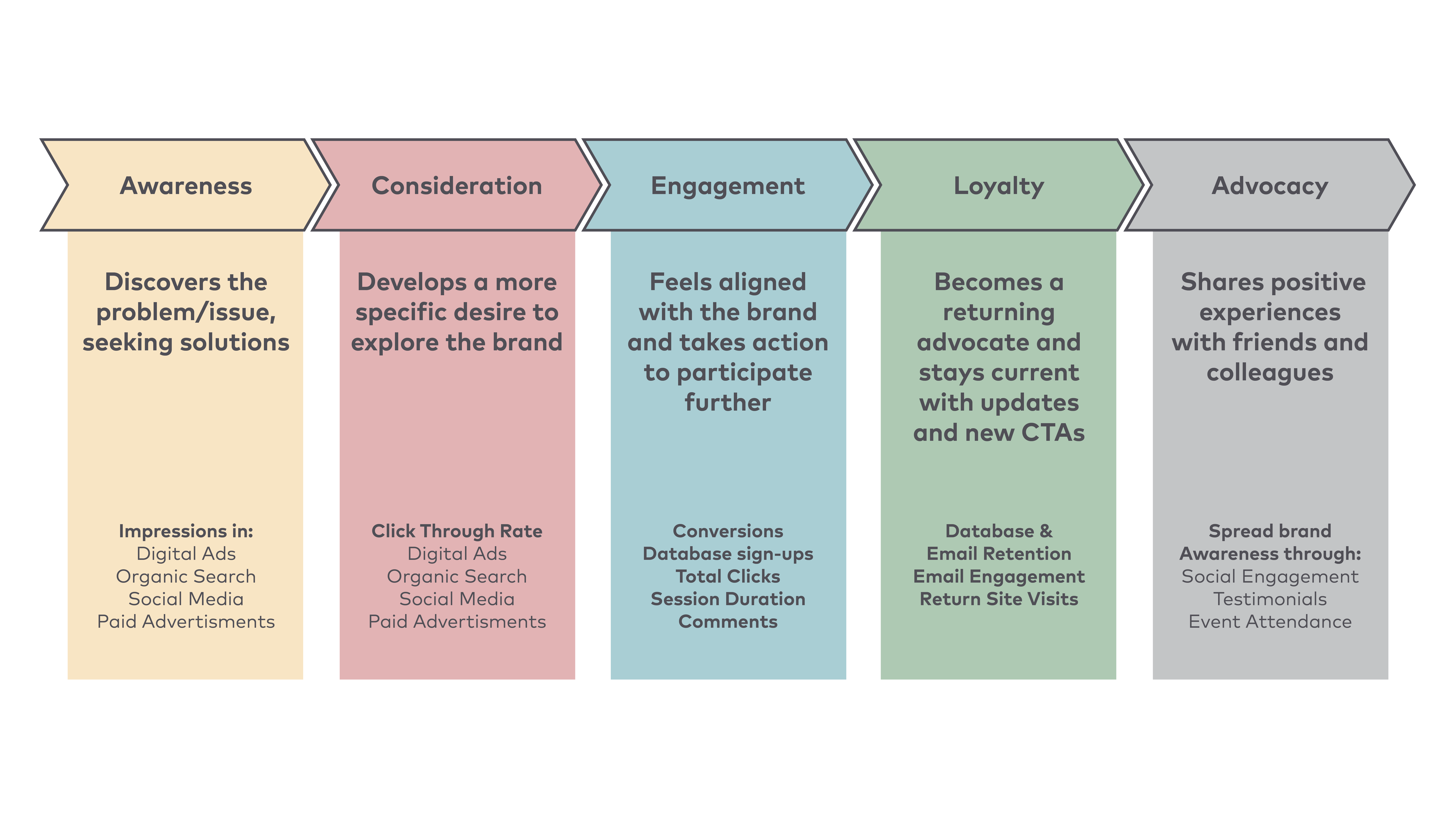Architecting User Experience
In today’s digital landscape, brands compete for audience attention. User experience (UX) determines how audiences receive your brand and messaging online. Crafting a positive UX on websites and webpages is essential to engaging site visitors with your organization’s messaging and calls to action. Successful UX guides users towards a desired action or conversion, maximizing the number of users who perform the behaviors that further an organization’s mission and goals. Here are a few tips to create an effective experience:
Keep it simple and predictable.
It can be easy to overcomplicate a website. Site users often skim the content of a webpage to get the information they need, and overly complex design can cause confusion. Creating consistent visuals, predictable functionality, and consistent tone and voice limits confusion, builds trust, and reinforces your organization’s brand.

When UX design is consistent, users can navigate a site quickly and convert without distraction or confusion. Writing concise, easy-to-skim content using headings, subheadings, bullet points, imagery, and tables where appropriate can also clear paths to a user’s conversion.
Investigate the User Journey
A bird’s eye view of user behavior allows your team to view step-by-step how website architecture guides a user toward a desired behavior. Your team can create user journeys for unique audience segments to include how a user gets to a website, what that user does once they arrive, what events count as conversions, and how users will continue to engage with your organization after a conversion.

Thorough user journey mapping ensures that any product decisions made in the writing, design, or development stages support desired behaviors and incorporate optimizations that can reduce the amount of friction a user encounters in performing those desired behaviors.
The process of outlining user journeys also creates alignment across content, design, and development teams. Those conversations build out a clear project roadmap for the team and client.

Start collaborative conversations early.
Create clear pathways for your team to communicate early on and set the tone for open communication and collaboration. Core user experience decisions should incorporate input from a variety of stakeholders. Transparency throughout every stage of the project enables cross-discipline innovation and improves your team’s process and the final product.
When collaborating with external partners or vendors, establish check-ins ahead of project milestones and align on action items. This is a proactive way to anticipate a project’s challenges and provide space to problem-solve as a larger team.
Iterate and continuously improve.
The web world is ever-changing, and user experience should adapt to those changes, even after a website or product is launched. Your team can monitor key metrics like conversion rates and average engagement time and use those metrics to make adjustments that will improve on producing the desired user behavior.
Implement retrospectives following the launch to identify ways to improve processes and behaviors for the next project or to take note of any new ideas upon a project’s completion.
The Adfero POV
Prioritizing thoughtfully architected user experience is essential to creating products and services that meet both business objectives and user needs. Although enhancing the user experience may take time, it is a worthy investment resulting in sustainable long-term benefits such as improved audience loyalty and retention and a strengthened brand reputation.
